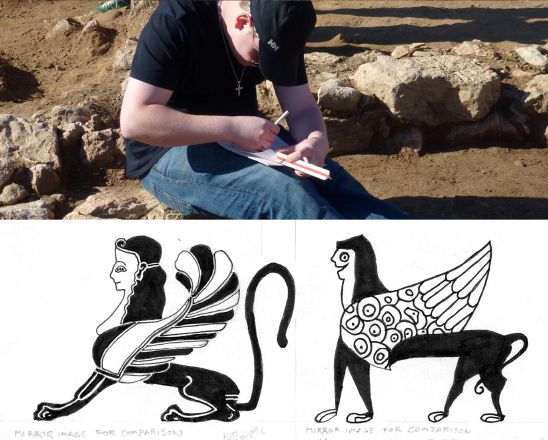
Archaeological Drawing
One of the most important aspects of archaeological work, both in terms of fieldwork and in terms of the study of finds, is the proper documentation of all objects and material found. This, apart from thorough and systematic description and photography, includes the drawing of finds in a coherent and simple, but accurate and detailed, manner. This is done through archaeological drawing, a method of technical drawing that provides scholars with accurate drawings of objects, architectural members, and excavation sites, created following very precise conventions, that can greatly assist the documentation of all finds and of specific attributes necessary for their further study and preservation. Furthermore, it allows scholars to fully understand the form and nature of objects, leading to useful results in the field of artifact studies.
Drawings have been used by antiquarians and archaeologists since the early stages of the development of archaeology as a science, due to the need for illustrations in publications, but also for the documentation of finds in an era when photography was not as available as today. Since then archaeological drawing has developed into a highly technical craftsmanship, moving away from artwork and towards digital methods and files that can also be used by other modern archaeology resources. Nevertheless, the basis of archaeological drawing remains the use of analogic measurements and instruments and the subsequent digitization of the results, whereas in various specific forms of finds pencil and ink remains a necessary tool for archaeologists. This is precisely the field this course aims at dealing with.
Prerequisite: Archaeology, Classical Studies or Anthropology (archaeology track) majors only.



